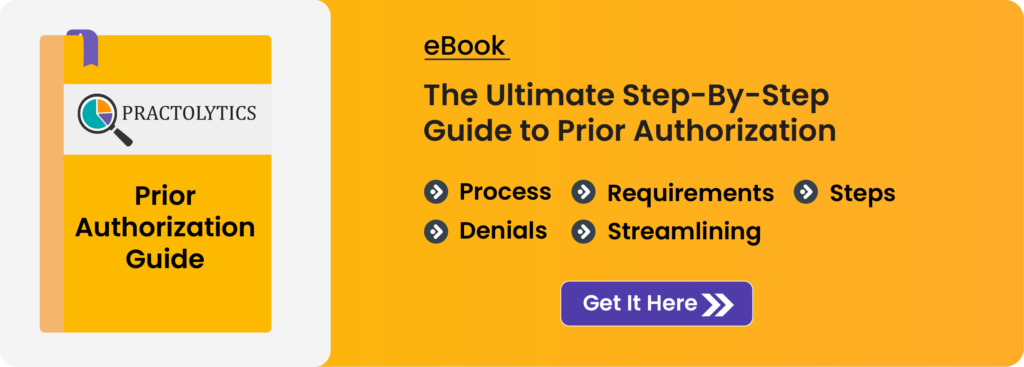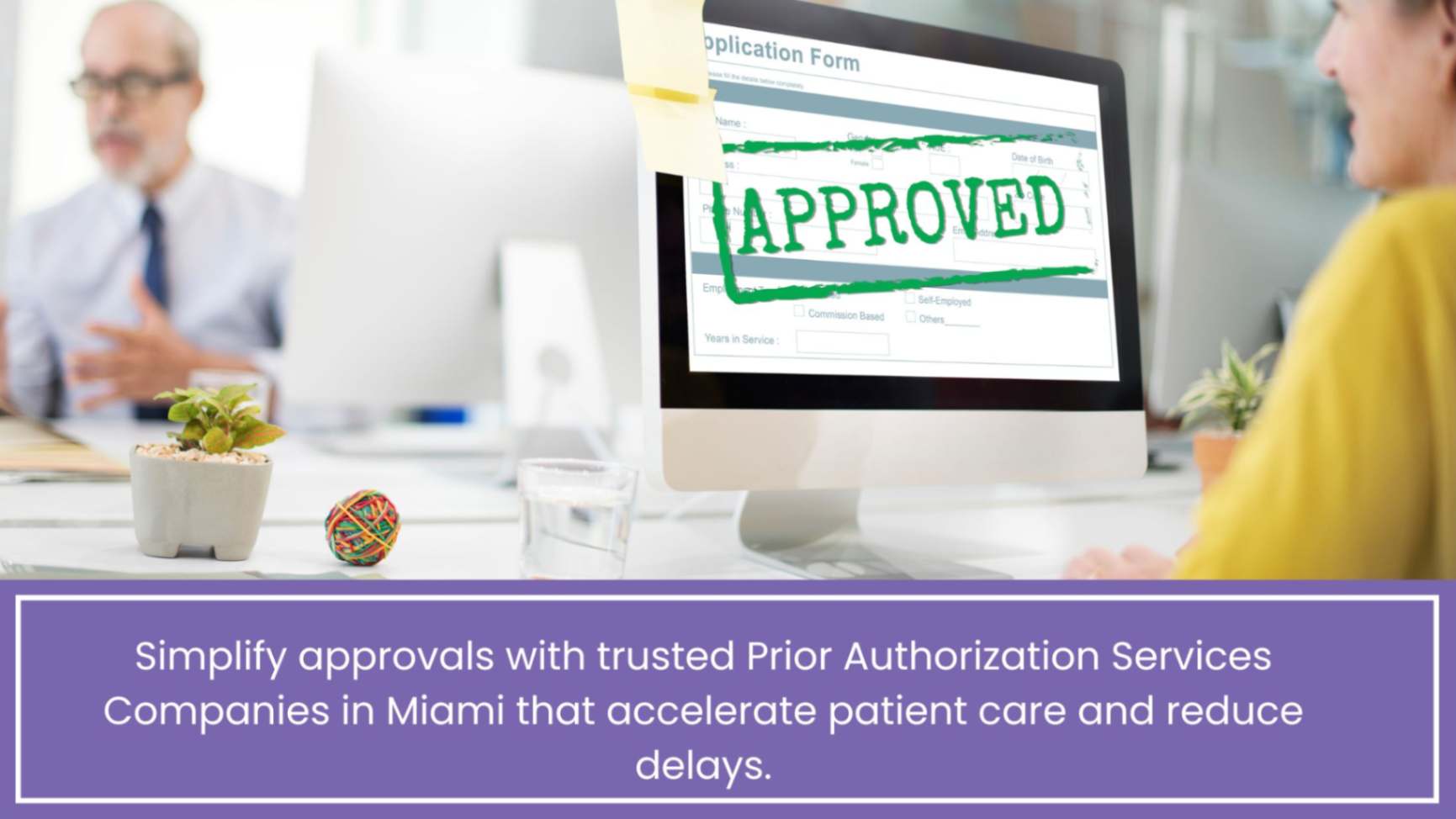How Outsourcing Prior Auth Reduces Provider Burnout in 2026
By shifting staff away from patient care and drowning them in paperwork, prior authorization drains clinic time and energy. How Outsourcing Prior Auth Reduces Provider Burnout in 2026 becomes clear when you see how expert support slashes stress, cuts administrative load, and boosts productivity. This blog explains how outsourcing prior authorization saves money, accelerates approvals, and lightens the daily burden on providers. You’ll find trends, practical steps, success metrics, and real-world insights that show the value of partnering with specialists. Discover how combining automation with skilled teams transforms workflows, and see how Practolytics streamlines prior authorization for smoother, more efficient medical care.
Table of Contents
Is Outsourcing Prior Authorization Services the Solution to Staff Burnout in 2026?
Prior authorization eats clinic time. Staff lose hours on forms, calls, and chasing approvals. Doctors and nurses shift from patients to paperwork. Teams tire; burnout grows.
Outsourcing PA seems smart—let experts handle it so your team treats patients. But will outsourcing truly fix burnout in 2026? This post breaks down facts, trends, costs, pros, cons, and gives a clear path to decide what works for your clinic.
The Problem: PA Work is Heavy and Getting Worse
Prior authorization aims to manage costs and ensure necessary care. But it creates heavy admin loads. Studies show providers spend many hours weekly on PA tasks. One major study found practices handle around 40–45 PAs per doctor weekly, taking 12–14 hours. Most clinicians report that PA fuels burnout.
These hours carry real costs. Many clinics hire staff solely for PA work. When volume spikes, existing teams work overtime or juggle extra duties. This leads to errors, low morale, and staff loss. Hospitals report rising expenses and unpaid claims due to PA delays.
Patients feel the pain too. Long wait times delay care and cause patients to skip treatments. This worsens health and creates legal risks for doctors and clinics. That’s why many clinics use outsourcing. It cuts the hassle and lets staff focus on patient care.
Why Outsourcing Prior Authorization is Attractive.
Outsourcing means using an outside company to manage your healthcare prior-authorization process from start to finish: intake, paperwork, submission, follow-ups, and appeals. Here’s why businesses choose it:
- Scale efficiently. Outsourced teams focus only on PA work. They build payer contacts, templates, and processes that most small clinics can’t match.
- Speed. Vendors use dedicated staff and tech to handle requests faster. Many guarantee quicker results.
- Less hiring hassle. Skip recruiting, training, and retaining PA staff. This saves HR resources.
- Potential cost cuts. Outsourcing non-core tasks often lowers expenses—studies show savings of 7–28%, based on service and model. It turns fixed staffing costs into flexible fees.
- Better data tracking. Vendors provide dashboards showing approval rates, turnaround times, and denial reasons. This helps clinics solve core problems.
For many mid-size and large clinics, these gains are attractive. But outsourcing isn’t right for everyone.
What Outsourcing Will Actually Fix — and What it Won’t
What it can fix
- Repeated paperwork drains your team. Outsourcing stops the call-and-wait cycle, freeing your staff.
- After-hours work ends. Vendors cover late PA tasks so your team doesn’t have to.
- Training gaps disappear. Vendors know payer rules and appeals, cutting repeat submissions.
- Handle volume spikes easily. When adding services or locations, vendors manage extra PA work—no hiring needed.
What it won’t fix
- Bad front-end data. If patient forms or notes have gaps, prior authorization still fails. Outsourcers clean up errors, but the real fix is accurate intake from the start.
- Payer delays. Outsourcers follow up daily, but payers set their own timelines. Some pay now and move faster—others take weeks.
- Roots of burnout. Heavy workloads, poor leadership, and moral strain drain teams. Offloading PA tasks helps.
Evidence and Trends for 2024–2026
Several large studies confirm that PA issues are big and growing. Doctors feel swamped: surveys show high PA numbers per doctor, tying them to burnout. Many spend 12–14 hours weekly on PAs, calling it draining.
Hospital reports reveal rising costs and time spent on PAs. Some face billions in delayed payments. To cope, they’re turning to automation and new staffing fixes.
Some payers are responding. Big insurers cut prior authorization rules for select outpatient services and promised faster e-responses. This may ease future PA work for specific treatments—but won’t scrap PAs entirely.
Outsourcing and automation firms show payoff through quicker approvals and leaner staffing. Studies confirm cost cuts and smoother operations when non-core tasks are outsourced—though outcomes depend on vendors and contracts.
The takeaway: PA processes are changing. Automation and payer simplifications trim some tasks, yet many providers still grapple with heavy PA loads in 2026—particularly in busy specialties.
How to Decide: in-House vs. Outsource vs. Hybrid
There are three main choices:
1. Keep it in-House (with better tools)
Pros:
- Full control over talking to patients and their care journey.
- Easy teamwork between doctors and staff.
- Keeps important clinic know-how inside your business.
Cons:
- Need to hire and train good people.
- Fixed costs stay high, and managing takes work.
- Staff may burn out if patient numbers don’t drop.
Best for: Clinics with fewer patients, smooth daily work, and those who want all patient care handled by their own team.
2. Outsource Fully
Pros:
- Quick relief for overworked teams.
- Access to payer knowledge and scale.
- Turns fixed costs into flexible fees.
Cons:
- Less daily control over patient communications.
- Bad vendors slow approvals.
- Potential data risks and setup work.
Best Fit:
Large clinics are drowning in prior authorizations, struggling to hire, or ready to outsource admin tasks.
3. Hybrid — Outsource the Heavy Lift, Keep Clinician Touchpoints
Pros:
- Combines vendor efficiency with in-house clinical oversight.
- The outsourcer manages patient intake, follow-ups, and appeals, while clinicians focus solely on medical decisions.
- Strikes the optimal balance between cost control, quality assurance, and provider satisfaction.
Cons:
- Demands seamless coordination between teams.
- Requires robust service agreements and unified reporting.
- Ideal for: Mid/large practices seeking operational relief while retaining clinical authority.
How to Measure Success if You Outsource
Before signing, agree on clear goals. Track them closely:
- Approval speed (aim based on what payers usually take).
- Approval rate (% approved without extra steps).
- Staff time saved (hours freed up for patients).
- Patient impact (fewer delays or complaints).
- Cost per approval (vendor fee vs. your own costs).
- Burnout signs (surveys, quitting rates) — vital if easing burnout matters.
- Demand dashboards and reports — skip vague promises, insist on numbers.
Operational Checklist for a Successful Outsourcing Pilot
- Map your workflow to pinpoint delays and denial root causes.
- Pick a pilot: one clinic, specialty, or high-volume payer partner.
- Set clear rules: timelines, document needs, escalation steps.
- Link systems securely: EHR access and smooth data sharing.
- Train teams: clinical staff and vendor on handoff protocols.
- Test and adjust: Run pilot 60–90 days, check KPIs and staff input.
- Decide next steps: Scale or pivot using real pilot results.
Risks to Avoid When Outsourcing
- Poor integration: Vendor EHR access delays slow work.
- Weak SLAs: No guarantees mean lower quality.
- Security gaps: HIPAA processes and breach duties must be clear.
- Hidden costs: Watch PA fees, appeal charges, and setup costs.
- Missing feedback: Denial data must loop to your team to fix causes, not shift work.
The Human Side: Does Outsourcing Reduce Burnout?
Outsourcing removes routine, draining tasks. Staff feel relieved when experts handle daily PA follow-ups. But burnout comes from many sources: too much work, low control, moral issues, and weak support. Outsourcing helps with workload, but leaders must also:
- Fix schedules and team sizes.
- Give mental health help and time off.
- Keep patient care time sacred.
- Talk clearly and cheer successes.
- Outsourcing is strong, but not a total fix. Pair it with a full burnout plan.
Where Automation and Outsourcing Meet
Many vendors combine people and technology: bots handle forms, AI reviews documents, and experts address complex cases. This blend works best—quicker, cheaper, more accurate approvals with less team strain. As insurers upgrade online systems, these smart setups will get even better.
Bottom Line — is Outsourcing the Solution for 2026?
Yes — but with caveats.
Outsourcing prior authorization services lifts the heaviest admin load off your team. For high-volume clinics or where hiring is tough, it cuts PA hours, speeds approvals, and lets staff refocus on patients.
But don’t treat it as a “set and forget” fix. To truly ease burnout:
- Clean up front-end data errors.
- Keep clinicians in the loop for medical decisions.
- Track team stress and workload post-outsourcing.
- Use vendor reports to solve core issues, not just move tasks.
Done right—with clear contracts, smooth systems, and a blended model—it’s a smart 2026 burnout fix that protects patient care.
How Practolytics Can Help
Practolytics offers a smart PA solution built for busy healthcare teams. Our tools and experts handle PA work so you can focus on patients:
- Automate repetitive paperwork tasks
- Assign complex cases to specialized PA experts
- Show real-time dashboards tracking approval speed, denials, and time saved
- Spot recurring denial patterns to fix core problems
If PA overload is burning out your staff, try our clinic-specific pilot. We’ll measure:
- Hours saved
- Faster approvals
- Happier teams
See proven results before committing.
Ready to rescue your team from PA chaos? Get your free pilot plan and workflow review today. Contact Practolytics.
Read More – Prior Authorization Services for Podiatry : improving Patient Access and Care





